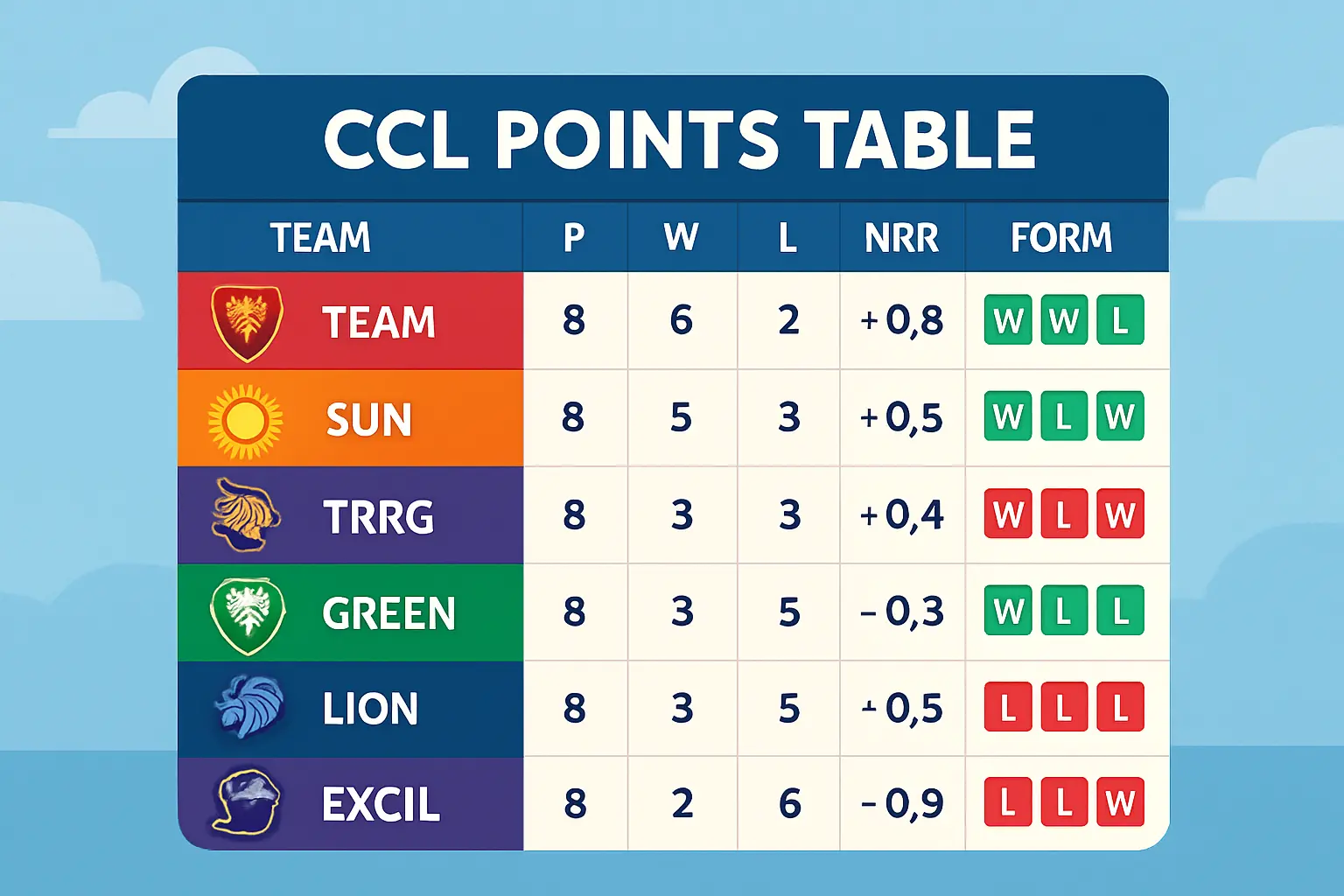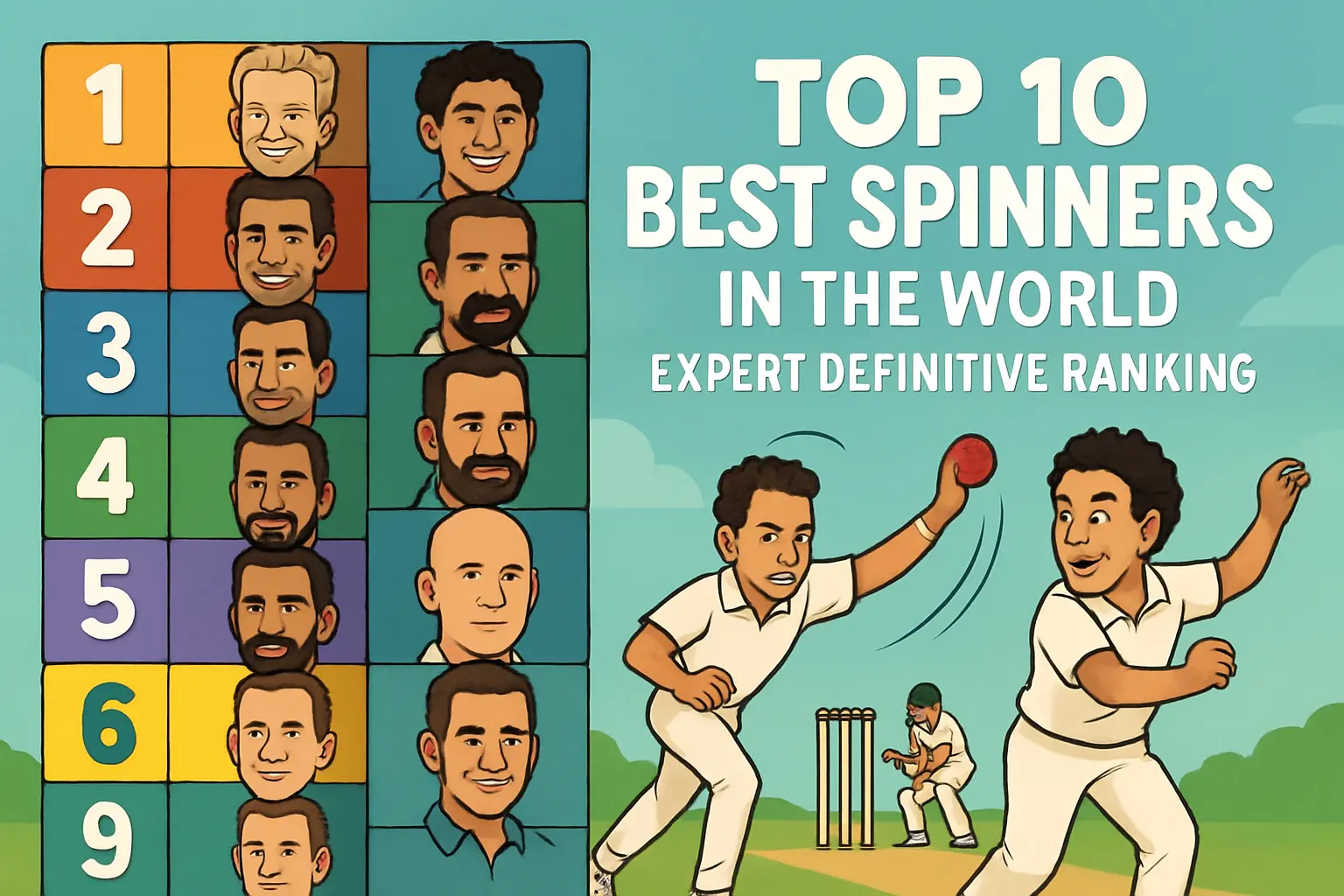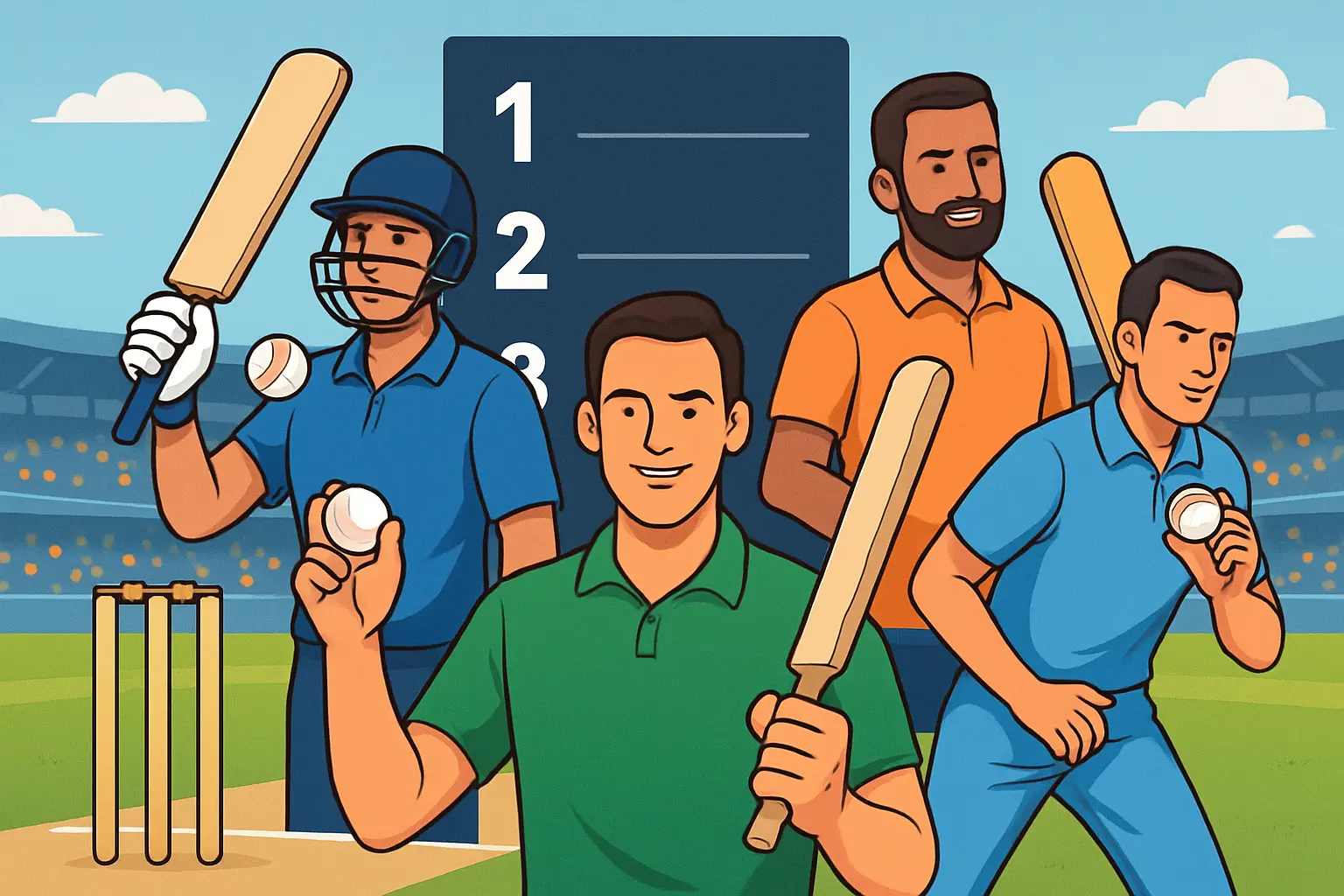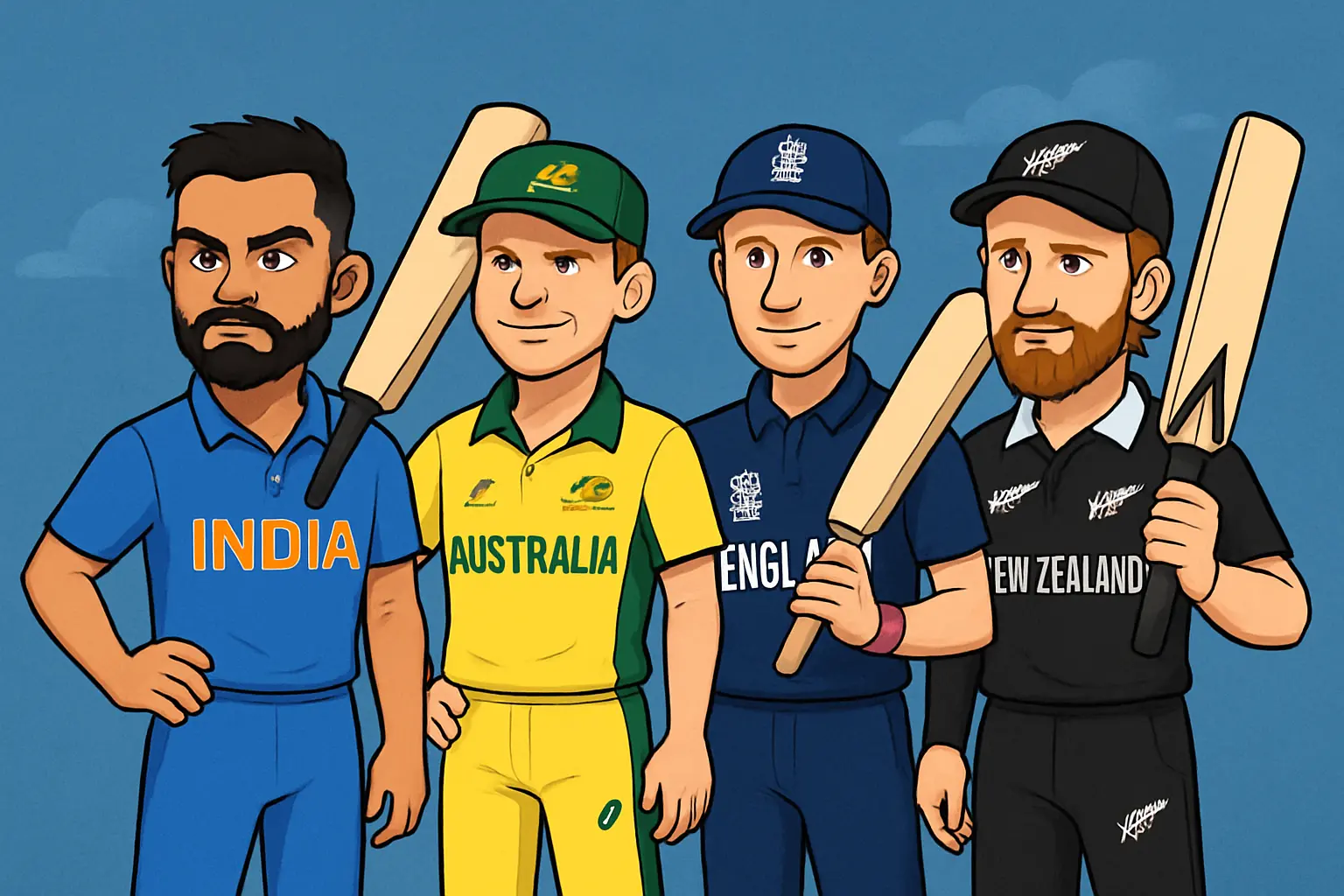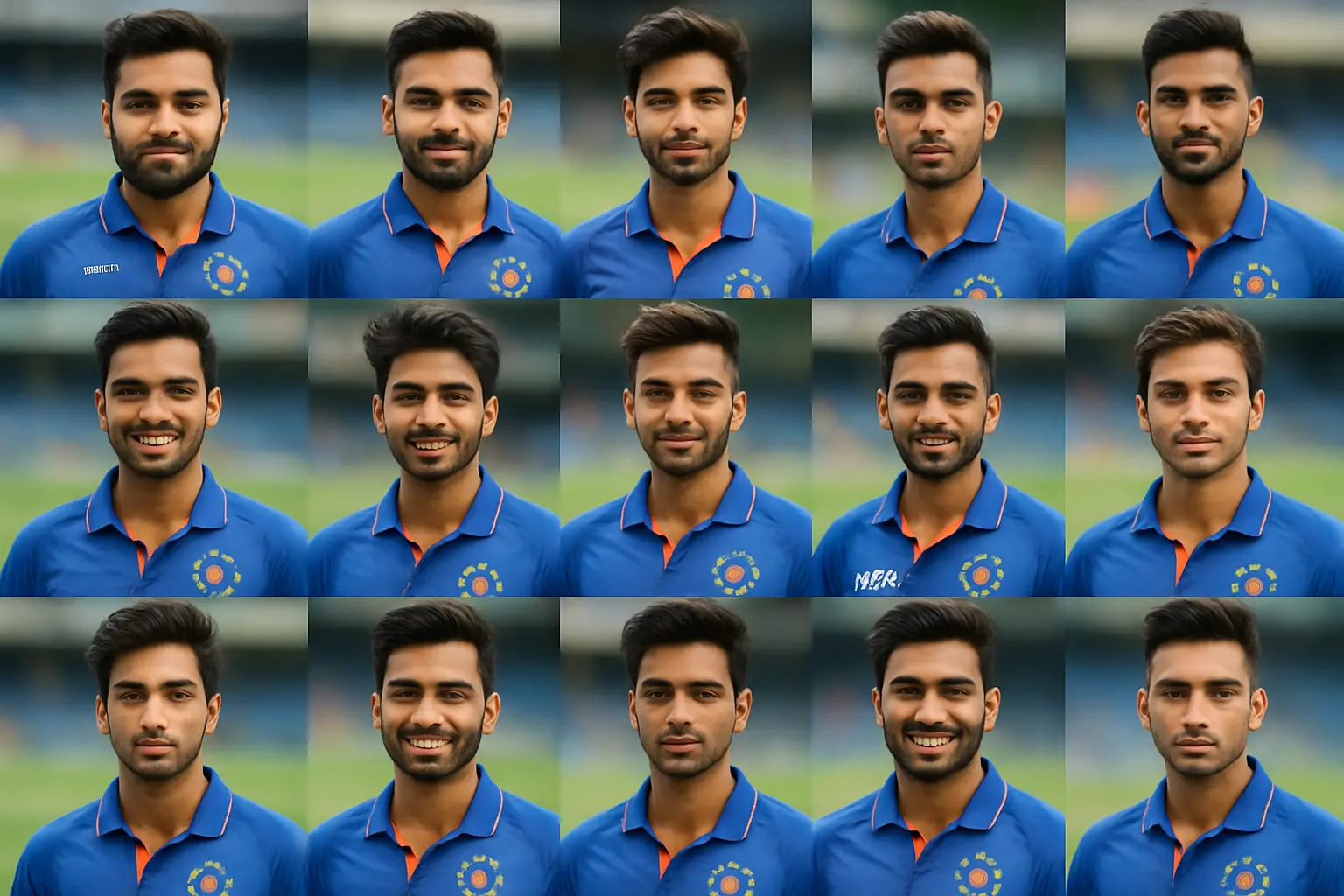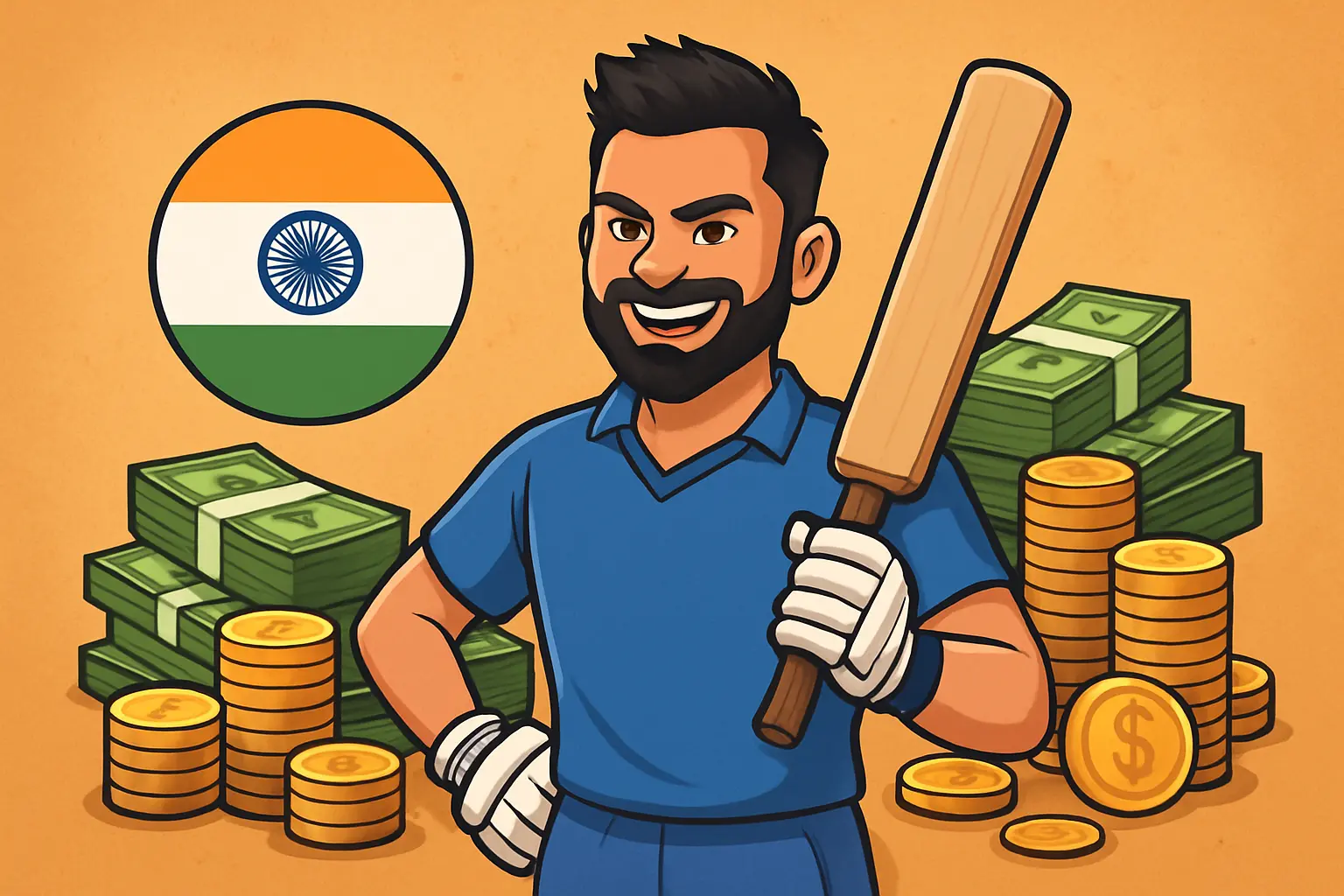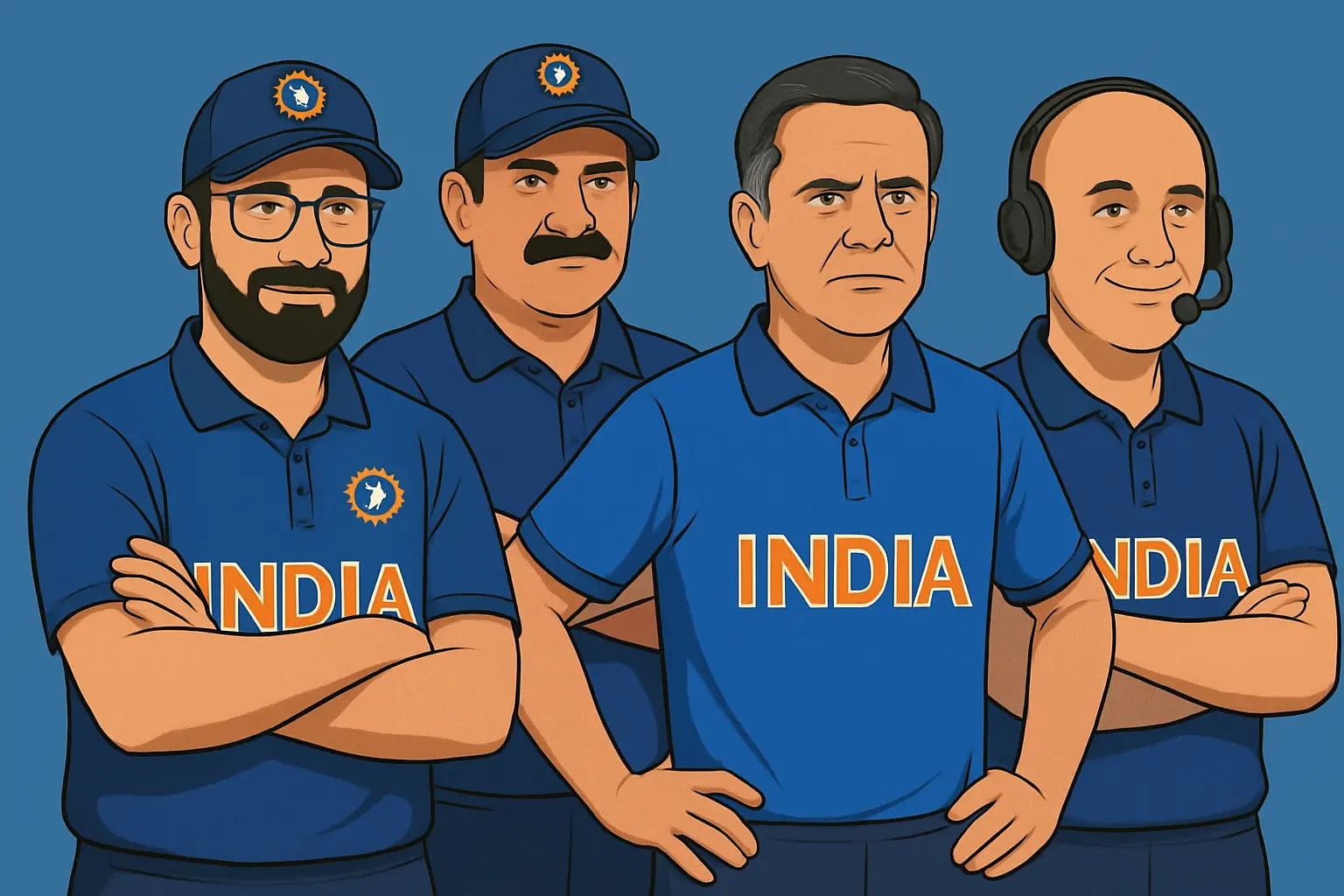Owner of Royal Challengers Bengaluru (RCB): United Spirits Limited (USL), part of Diageo, through its sports subsidiary Royal Challengers Sports Private Limited (RCSPL). Earlier control rested with UB Group/Vijay Mallya. The women’s team in the WPL is owned by the same group under the same corporate umbrella.
A match at M. Chinnaswamy Stadium is an assault on the senses. The red swells, the chants ricochet off the concrete, and somewhere behind the glass of a corporate box sit the people who pull the long levers: the RCB team owner, the senior management, and the brand guardians tracking every moving part of a franchise that transcends scorecards. Royal Challengers Bengaluru is a business, a cultural symbol, and a product of a very deliberate corporate architecture; if you understand the owner and the ownership structure, you understand why this club feels the way it does.
This is the definitive deep-dive—how RCB is owned and governed, how the money moves, why the name changed to Bengaluru, and what the WPL team means to the enterprise. It’s written from a vantage point inside the room, where rights contracts and roster bets matter as much as boundary counts.
The owner, in one clean view
- Parent group: Diageo (global spirits company)
- India operating arm: United Spirits Limited (USL)
- Sports subsidiary: Royal Challengers Sports Private Limited (RCSPL)
- Team brand and cricket operations: Royal Challengers Bengaluru (men) and Royal Challengers Bangalore/Bengaluru (women) under the same umbrella
Why this matters: the RCB owner is a mainstream consumer company with powerful brand engines, not a private equity vehicle or a family conglomerate chasing industrial synergies. Everything—the identity, the “Play Bold” doctrine, the sponsor slate, the retail footprint—reflects the way consumer brands are built in India.
Understanding the RCB team owner: United Spirits, Diageo, and the sports subsidiary
RCB owner name and company details
- United Spirits Limited (USL): One of India’s largest beverage alcohol companies. USL is part of Diageo PLC, the global spirits leader.
- Royal Challengers Sports Private Limited (RCSPL): USL’s wholly owned sports entity. RCSPL holds the franchise rights, manages the team brand, runs sponsorships and licensing, and houses the staff that operate cricket and commercial programs across both the IPL and the WPL teams.
Is RCB owned by Diageo?
Yes—via USL. Diageo’s control of USL places the franchise within a publicly listed, professionally managed environment. Decisions are vettable, brand-focused, and executed by specialists who run consumer categories at scale.
Royal Challenge and the name “Royal Challengers”
The origin is brand-first. “Royal Challenge” is a legacy whisky brand from the UB/USL stable, and the team name “Royal Challengers” was an intentional marketing bridge between sports and beverages in a market with strict advertising regulations. That equation changed when Diageo took stewardship, but the naming equity remained. The business shifted towards “surrogate” and lifestyle assets—RCB cafes, merchandise, experiential events—rather than overt alcobev pushes. The team became a brand in its own right, no longer needing to borrow meaning from a bottle.
Ownership timeline: from inaugural auction to Diageo stewardship
The inaugural purchase
The Bengaluru franchise was acquired in the first IPL auction by UB Group, spearheaded by Vijay Mallya. The bid was among the highest at the time—approximately $111.6 million, translating to roughly INR 440–460 crore based on rates then. The ambition was clear from day one: a premium, metro-club identity designed to appeal to India’s new urban consumer.
The corporate transition
As control of USL shifted to Diageo, so did operational control of the sports assets. The franchise moved from a promoter-led style to an institutional governance model. The cricket decisions, once colored by flamboyant persona and celebrity adjacency, became part of a standardized process run by dedicated professionals and subject to board oversight within USL/RCSPL.
Is Vijay Mallya still the owner of RCB?
No. He is part of the franchise’s origin story but not its present. The owner of RCB is United Spirits Limited, under Diageo, acting through RCSPL.
What changed after the transition
- Governance: Board-driven oversight replaced promoter discretion.
- Risk profile: Disciplined budget cycles, tighter compliance, and procurement rigor.
- Talent strategy: Shift toward analytics-led recruitment, franchise-wide high-performance systems, and more deliberate leadership appointments.
- Brand playbook: From flamboyant, personality-led branding to a cohesive lifestyle-driven portfolio—jersey experiences, city events, proprietary fan IP (Unbox, 12th Man Army activations), cafe-bar rollouts, and premium merchandise.
How the club is run: structure, people, and decision-making
The legal and operating structure is the skeleton; the management team is the muscle. RCB’s modern management looks like any high-performing consumer sports property.
Key roles you should know
- Chairman, Royal Challengers: A senior USL commercial leader typically chairs the franchise (in recent seasons, this has been Prathmesh Mishra). The chair owns big-picture commercial strategy and governance alignment with USL/Diageo.
- Head/CEO-equivalent for RCB: Rajesh V Menon has long been the franchise’s day-to-day business leader, ensuring the operations, marketing, ticketing, sponsorships, licensing, and retail functions are aligned.
- Director of Cricket (Men): The franchise pivoted to a clear director-of-cricket model, empowering a specialist to run scouting, auction strategy, and high-performance frameworks. Mo Bobat, with deep experience in high-performance systems, has been the key name in this chair.
- Head coach, Men: Andy Flower brought extensive T20 pedigree, introducing a calm, methodical approach to match preparation, role clarity, and opponent-specific tactical planning.
- Captain, Men: Faf du Plessis—backed by leadership group inputs—anchors the on-field decision-making, collaborating closely with the coaching box and data staff.
- WPL leadership: Smriti Mandhana captains the women’s team. Coaching has been led by a modern T20 practitioner (Luke Williams coached the title-winning run), mirroring the men’s systems with role-specific clarity.
A note on the “director of cricket” model
This is not a cosmetic title at RCB. The director owns the roster profile: powerplay bowling balance, middle-overs control, death overs finishing, left-right batting dynamics, and wicket-taking intent. The director is also responsible for integrating sports science inputs: workload planning for quicks at Chinnaswamy’s high-scoring cauldron, conditioning blocks, and specialist fielding drills for small-boundary scenarios where aerial tactics and reaction time are different than at larger venues.
The Bengaluru rebrand: why the name changed and what it means
The shift from “Bangalore” to “Bengaluru” was more than a paint job. It was a homecoming. The city’s official name and the fans’ lived identity have long been Bengaluru. The owner’s statement at the time emphasized community: aligning the crest with street-level pride, honoring the language, and letting the jersey feel native in a way that “Bangalore” never entirely did.
It also reflects Diageo/USL’s consumer sensibility. City authenticity sells. Slogans like “Play Bold” transitioned from poster copy to civic rallying cry when placed against “Bengaluru.” Merch design, event IP (Unbox on Church Street), and Kannada-led social content were not afterthoughts but the center of the brand. That change strengthened the link between the team and the market it serves.
Financials and valuation: what RCB is worth and how the money is made
How much is RCB worth?
Independent valuations place RCB in the upper tier of IPL franchise values—often near the very top once you isolate pure brand equity. It’s a function of big-market potential, a loud national fan base, and relentless digital engagement. In dollar terms, think high eight figures climbing into nine over the medium term if revenue per fan keeps widening.
How IPL teams make money: the RCB case study
- Central revenue: A share of the IPL media rights and league-wide sponsorships flows to franchises based on the BCCI distribution formula. This is the bedrock income stream.
- Matchday: Ticketing at M. Chinnaswamy, hospitality boxes, F&B concessions. Because RCB’s home nights routinely sell out and corporate demand is robust, per-match yield is among the strongest in the league.
- Sponsorships: Principal jersey partnership, sleeve/lead partners, category exclusives (banking, fintech, auto, telco, logistics, cement, paints, electronics), and regional tie-ups. In recent cycles, RCB has partnered with a global airline brand, international apparel (PUMA as a long-running kit partner), tech-first brands, and high-visibility domestic consumer companies.
- Licensing and retail: Replica kits, lifestyle fashion capsules, caps, training wear, co-branded sneakers, and collectibles. The team has invested in owned retail and e-commerce funnels to capture more margin.
- Content/IP monetization: RCB’s digital studio pushes serialized content—draft rooms, mic’d-up nets, fan reality formats—creating sponsorship slots beyond the live game. This is a competitive moat because the fan base engages heavily outside match hours.
- Experiential: RCB cafes and bars, watch-party circuits, and pre-season Unbox events are revenue lines as well as surrogate branding platforms.
Why the valuation rises
- Scarcity: Limited franchises in the IPL ecosystem.
- Brand power: RCB’s red jersey is culture, not just sports apparel. Social followings translate into brand lifts that partners will pay for.
- Stadium economics: Despite Chinnaswamy’s compact size, yields are high because of demand and premium inventory optimization.
- Pan-India narrative: Virat Kohli’s long tenure gave the brand a national, not just regional, topology. Even as leadership cycles evolve, that halo compounds.
An indicative sponsorship map for a typical season
- Principal front-of-shirt: A category-leading brand—often airline, fintech, or consumer tech.
- Training kit partner: International sportswear (PUMA’s presence has been visible across seasons).
- Sleeve and back: Banking, insurance, and consumer electronics.
- Category partners: FMCG, food delivery, logistics, automotive, tyres, paints, electricals/wires, telecom.
- Digital partners: Fantasy gaming, OTT tie-ins, content production houses.
Numbers vary season-to-season, but the principle stands: RCB’s slate is a diversified portfolio weighted towards national brands hungry for massive reach and uplift.
RCB Women: one owner, one philosophy
The WPL wasn’t an afterthought. RCB Women are owned by the same RCSPL entity and are part of a strategic commitment to women’s sport. The plan is mirror-and-extend:
- Ownership and governance: Same board governance, shared commercial services, and integrated marketing.
- Brand and fan: Same colors, crest adjustments for the women’s program, and cross-promotion. Shared content brings WPL fans into the larger RCB orbit.
- Cricket operations: Dedicated women’s scouting, overseas pro recruitment, role clarity on powerplay aggression, and death bowling. The learning loop runs both ways: tactical innovations from the women’s team feed the men’s room and vice versa.
- On-field leadership: Smriti Mandhana captains the women’s team. The coaching setup is designed around T20 clarity, with Luke Williams notably guiding a title-winning run. The owner’s investment in the women’s side wasn’t token—it was designed to produce silverware, and it delivered.
Bengaluru’s home: M. Chinnaswamy Stadium and the owner’s playbook
Chinnaswamy is a strategic variable. Smallish boundaries, a skiddy surface under lights, and a thin air feel that makes white-ball cricket turbocharged. For the owner and cricket leadership, this means:
- Squad architecture: You don’t merely sign big hitters; you curate boundary hitters with specific release points and match-ups. Likewise, your attack leans on hard-length precision, cutters that stall off the deck, and wrist-spin that can attack even on nights when the ball feels like a comet.
- High-performance investments: Load monitoring for quicks, batting routines under simulated dew conditions, and catching drills specific to skied balls coming faster than at larger grounds.
- Fan experience: The stadium’s central location enables more pre-game activations and post-game hospitality. The owner extracts yield by converting atmosphere into paid experiences without diluting the core of the sport.
Inside the decision room: how RCB builds a squad
- Auction strategy: The director of cricket and analysts model how many runs a finisher is worth when Chinnaswamy inflates the par score. That changes how you price a player like Dinesh Karthik—his value isn’t portable across all franchises; it is maximized in Bengaluru.
- Spin calculus: Even when wickets don’t crumble, a spinner who buys wickets with deception, not just economy, is prioritized. RCB’s analytics flag how often a leg-spinner’s wrong’un draws mishits on the shorter side boundary and sets the fields accordingly.
- Leadership: Faf du Plessis didn’t just bring experience; he brought pattern recognition. Under him and the coaching box, RCB’s in-game resets improved—field changes within two balls of a pattern emerging, bowling plans rewritten mid-over, and aggressive use of the impact player rule where it amplified a death-over hitter’s influence.
RCB’s management team, at a glance
- Owner: United Spirits Limited (USL), a Diageo company
- Holding/operating company: Royal Challengers Sports Private Limited (RCSPL)
- Chairman: Typically a senior USL executive; Prathmesh Mishra has chaired in recent seasons
- Business head: Rajesh V Menon (Head/Vice President)
- Men’s cricket: Director of Cricket (Mo Bobat), Head Coach (Andy Flower), Captain (Faf du Plessis)
- Women’s cricket: Captain (Smriti Mandhana), Head Coach (Luke Williams during title-winning season)
The above roles illustrate the owner’s model: seasoned corporate oversight married to elite cricket operators.
Why RCB’s owner invests so much in brand and content
Because brand equity pays twice. Once at the sponsor table and again in resilience during down seasons. RCB’s social reach, regional authenticity, and celebrity resonance create a buffer. The club turned “Play Bold” into a shared identity; fans wear it whether the team is on a winning steak or chasing the math.
The brand engine in action
- RCB Unbox: A pre-season street takeover on Church Street. Players walk the ramp, the new kit drops, retro strips appear, and the city turns into a runway for red. It’s smart revenue but smarter equity—kids who attend Unbox grow up as paying customers for tickets, merch, and content.
- RCB Bar & Café: A bridge between surrogate advertising norms and live sports culture. The venue becomes the city’s second screen; on match nights, it’s the third stand.
- The Museum/Heritage corners: Memory is monetizable. Bats, jerseys, and match balls from big nights become a live archive and a content factory.
Comparing IPL owners: where RCB fits
RCB’s owner sits in the “global consumer company” bracket. That’s different from:
- Corporate groups tied to cement or construction, where teams double as B2B relationship vehicles.
- Legacy sports companies spun out of industrial houses.
- Media/entertainment conglomerates using teams as content factories.
RCB’s edge is Diageo’s brand-building DNA. The playbook rewards long-term cohesion and marketing depth. It also brings constraints: stricter compliance, careful category selection for sponsors, and a durable commitment to reputation management. The payoff is a brand that feels premium and cosmopolitan without losing local color.
The WPL multiplier: why it matters to the owner
Beyond social good or optics, WPL strengthens the owner’s bargaining power with advertisers seeking gender-balanced sports strategies. It doubles the content inventory, opens new audience segments, and cements year-round relevance. When RCB Women lifted the trophy under Smriti Mandhana, it was an emphatic return on strategy: the RCB badge now carries championship credibility and aspirational role models.
Name change to Royal Challengers Bengaluru: owner’s point of view
- Cultural alignment: Bengaluru isn’t a translation; it’s identity.
- Commercial upside: Regional content, Kannada-first campaigns, and city-specific lines in merchandise are stickier under a Bengaluru tag.
- Community contract: The team and the owner promised to be more present in schools, academies, and local clubs. A city name is also a promise to that city.
Myth-busting the RCB owner
- Is the owner Kingfisher/UB Group? Historically, UB Group acquired the franchise at inception. Today, the owner is United Spirits Limited under Diageo, via RCSPL.
- Is Vijay Mallya still involved? No.
- Does Virat Kohli own any stake? No. He is the face of the franchise but not an equity holder.
- Is the team’s brand tied to alcohol advertising? The name originated from a whisky brand, but the current brand system runs on lifestyle, community, and sports entertainment. The club operates within India’s regulatory framework, with a strong focus on compliant, family-friendly engagement.
- Are the women’s and men’s teams separately owned? No. Both are operated under the same ownership umbrella, ensuring shared standards and common brand language.
A closer look at RCB revenue, with practical ranges
These are indicative proportions that often apply to a club like RCB:
- Central pool: The single largest line, accounting for a substantial percentage of total income in a typical season.
- Sponsorship: Another large slice—diversified across principal, co-sponsors, and category partners.
- Ticketing and matchday: High yield due to sell-outs and hospitality, but inherently capped by stadium capacity.
- Merchandising/licensing: Smaller than media/sponsorship but scaling with brand extensions and digital drops.
- Content/IP: Increasingly meaningful, especially when aligned with sponsor objectives and OTT tie-ins.
Profitability depends on controlling player salaries (within the league’s cap), optimizing travel and camp costs, monetizing every possible rights window, and leaning on digital content where margins are superior.
RCB vs CSK owners, a quick comparison of models
- RCB: Diageo/USL—consumer brand-first, global beverage DNA, high marketing sophistication, strong urban positioning.
- CSK: A sports company with roots in an industrial group—hyper-local bonding, dynasty narrative, methodical cricketing processes shaped by continuity.
Both models work, but RCB’s playbook is arguably more “lifestyle franchise,” while CSK projects “winning machine as local community organism.” Ownership identity shapes fan culture as much as results do.
Table: Ownership structure at a glance
| Entity | Role | Notes |
|---|---|---|
| Diageo | Global parent (controls USL) | Multinational spirits group; brand and compliance rigor |
| United Spirits Limited (USL) | India operating company | Listed entity; houses the sports business via subsidiary |
| Royal Challengers Sports Private Limited (RCSPL) | Sports subsidiary, holds and runs RCB (men and women) | Contracts, sponsorships, talent ops, governance |
| Royal Challengers Bengaluru (RCB) | Team brand competing in IPL/WPL | Men’s and women’s teams under one badge |
The fan economy and why it favors RCB
There is science to the sound inside Chinnaswamy. RCB’s owner and marketers measure it in decibels and conversions. The club’s fan base skews young, digitally native, and emotionally literate in meme culture. A quip from the dugout becomes a sticker pack; a Virat stare becomes a thousand T-shirts. That energy turns into:
- Higher engagement rates on social drops, which sell sponsors.
- Faster sell-outs on jersey launches, which subsidize content production.
- A national touring fan culture that fills away sections, which sells television.
Behind the scenes: scouting and data
RCB’s data systems prioritize:
- Role-based metrics: “How many sixes in the last five overs on small grounds?” rather than “overall strike rate.”
- Opposition dissection: If an opponent batsman’s release to the short side is a slog-sweep, which wrist-spinner variant closes that window?
- Dew plans: Bowling first with a dry ball advantage, stacking extras under expected dew, and scripting second-innings chase structures with two finishing options.
The owner funds the apparatus—video analysts, machine-learning aggregations, satellite data on wind patterns. It’s not a gimmick; it’s the scaffolding under selection meetings.
RCB Women: operations in detail
- Talent ID: Preference for versatile all-rounders who scale in Indian conditions, paired with elite overseas match-winners. Ellyse Perry, for instance, offered not simply star power but multi-phase utility.
- Captaincy: Smriti Mandhana brought a blend of icon status and tactical cool. The owner’s media team leaned into her story, making her the face of the club’s women’s movement while guarding her bandwidth.
- Coaching: Under Luke Williams, the side played assertive, shape-holding T20 cricket—tactical courage when chasing, backed by aggressive fielding groups. The women’s success fortified the owner’s proposition: RCB is a club, not just a men’s team.
RCB’s sponsor ecosystem: what categories fit
- Airline and travel: Global reach meets national audience.
- Apparel: On-field kit and lifestyle streetwear.
- Fintech/banking/insurance: High-frequency brand impressions with precision targeting via digital content.
- Consumer electronics and appliances: Mass-market distribution with festival windows.
- FMCG and food delivery: Moment marketing around match nights.
- Industrial categories: Cements, wires, paints—brands that want mass recall via sport.
Sponsorships are often tiered with clear inventory: front-of-jersey, chest, sleeve, back, training kit, helmet, cap, digital series, and hospitality rights. RCB’s owner has refined this orchestration to reduce clashes and maximize category value.
RCB’s corporate governance and why fans should care
It’s easy to wave this away as boardroom chatter, but governance touches the pitch. Good governance means:
- Predictable budgets so the cricket department can plan multi-season.
- Transparent procurement so high-performance needs are met quickly.
- Player welfare policies that help retention; athletes talk, and a well-run club attracts talent.
Diageo’s standards also insulate the club against reputational shocks. When controversies hit Indian sport, the difference between a reactive franchise and a resilient one often comes down to governance culture.
The captain and the owner: shared language
There’s a scene that plays out the same way after big nights. The captain meets the Chairman and Head of RCB in the owner’s lounge. It’s not a green-room handshake; it’s a tactical debrief. The owner asks in commercial language about “moments” and “narratives” and the captain responds with phase-by-phase detail. That alignment defines modern RCB—an on-field product that understands its off-field purpose.
Royal Challengers Bengaluru vs Royal Challengers Bangalore: what changed and what didn’t
Changed:
- Official name usage across all touchpoints: kit, pressers, tickets, legal docs, and sponsor creatives.
- Language-first approach with Kannada foregrounded in campaigns.
Didn’t change:
- Colors, crest intent, and the “Play Bold” ethos.
- The relationship between the owner and the city—now amplified.
Local-language quick answers
RCB team owner in Hindi: RCB ke malik United Spirits Limited (Diageo group) hain, Royal Challengers Sports Private Limited ke through.
RCB owner name in Kannada: RCB malikaru United Spirits Limited (Diageo). Teamannu RCSPL moolaka naDesuttare.
RCB team owner in Tamil: RCB-ai United Spirits Limited (Diageo) RCSPL moolam thani amaippaga nirvaagikirathu.
RCB team owner in Telugu: RCB ni United Spirits Limited (Diageo) RCSPL dvāra nirvahistundi.
People Also Ask: expert answers
Who is the real owner of RCB?
United Spirits Limited, part of Diageo, operating through Royal Challengers Sports Private Limited.
Is RCB owned by Kingfisher/UB Group?
It was originally acquired by UB Group. Ownership later moved under United Spirits Limited with Diageo stewardship.
Does Virat Kohli own any stake in RCB?
No. He is a long-standing player and icon, not an equity holder.
Which company controls RCB?
United Spirits Limited, via its subsidiary Royal Challengers Sports Private Limited.
How much did RCB cost in the inaugural auction?
About $111.6 million, roughly INR 440–460 crore at that time.
Who owns RCB Women in the WPL?
The same group—United Spirits Limited via RCSPL.
What is RCB’s brand value?
Consistently among the league’s top-tier brands, widely placed in the high eight-figure dollar range with momentum.
Why did RCB change its name to Bengaluru?
To align with the city’s official name and deepen cultural and linguistic resonance with local fans.
A short list of IPL teams and owners for context
- Royal Challengers Bengaluru: United Spirits Limited (Diageo) via RCSPL
- Chennai Super Kings: Chennai Super Kings Cricket Limited (roots in India Cements)
- Mumbai Indians: Reliance Industries via IndiaWin Sports
- Kolkata Knight Riders: Red Chillies Entertainment and partners
- Rajasthan Royals: Emerging Media and partners
- Delhi Capitals: JSW and GMR joint venture
- Sunrisers Hyderabad: SUN Group
- Punjab Kings: KPH Dream Cricket Private Limited
- Gujarat Titans: CVC Capital portfolio (Irelia)
This comparison shows why RCB is unique: a pure consumer-brand philosophy backed by a global FMCG giant.
How the owner views success
Silverware matters. So does brand strength. The owner’s dashboard includes:
- On-field KPIs: Win percentage, phase efficiency, fielding runs saved, auction hit rate.
- Commercial KPIs: Sponsor renewal rates, average sponsorship yield, matchday revenue per seat, merchandise sell-through.
- Brand KPIs: Social engagement velocity, share of voice, sentiment index, and audience growth in non-metro clusters.
RCB is engineered to be anti-fragile—capable of growing even when the scoreline stutters.
The RCB fan contract: what the owner promises
- To respect the city by carrying its name and language proudly.
- To play cricket that is brave, modern, and analytically sound.
- To bring the best professionals—on-field and off—to the task.
- To invest in the women’s game as an equal pillar.
- To keep the doors open: museum corners, fan meets, Unbox nights, and neighborhood events.
The business strategy in one picture
- Identity: Royal Challengers Bengaluru, colors set in deep red and gold, anchored by “Play Bold.”
- Owner: United Spirits Limited (Diageo), via RCSPL, with global brand discipline.
- Product: Men’s and women’s teams, digital-first content, lifestyle extensions.
- Market: Bengaluru core with national and NRI diaspora reach.
- Moat: Fan culture, content output, and a city-stadium combo that makes the product thrilling.
Answer box (recap)
- RCB team owner: United Spirits Limited (Diageo), through Royal Challengers Sports Private Limited
- Earlier owner: UB Group/Vijay Mallya at inception
- WPL (RCB Women) owner: Same group, same subsidiary
- City identity: Royal Challengers Bengaluru—rebrand aligned with official city name
- Stadium: M. Chinnaswamy Stadium, Bengaluru
- Men’s leadership core: Faf du Plessis (captain), Andy Flower (head coach), Mo Bobat (director of cricket)
- Women’s leadership core: Smriti Mandhana (captain), Luke Williams (head coach during title run)
Frequently misunderstood but essential details
- Ownership vs. brand: The “Royal Challengers” name predates Diageo’s control, tied to a whisky brand legacy. Today, it operates as an independent sports brand with its own equity, governed under USL/Diageo corporate rules.
- Separate legal entity: RCSPL is critical for ring-fencing operations, contracts, and compliance.
- Women’s team parity: The women’s program is not a sideshow; it’s a full-fledged product with dedicated investment, scouting, and performance systems.
A note on captains, coaches, and continuity
Franchise windows evolve. Virat Kohli’s leadership era built the identity scaffolding. The baton to Faf du Plessis with Andy Flower’s method is a second system—with a director of cricket adding architecture. The women’s team adds a parallel nervous system, equally professionalized. The owner’s job is to ensure continuity across these cycles.
The Bengaluru advantage: city, software, and sport
Bengaluru’s global outlook, tech-worker density, and youth demographic tilt are ideal for a modern sports property. The owner leverages that through:
- Tech partnerships for data analytics and fan engagement.
- Early adoption of digital products in ticketing and membership ecosystems.
- Content collaborations with creators who speak the city’s language, online and off.
What to watch next from the owner
- Deeper women’s cricket pathways: academies, scouting in Karnataka’s districts, and coaching clinics.
- Experience layers at Chinnaswamy: dynamic pricing, premium social stands, and loyalty programs that knit seasons together.
- Data and performance science: marginal gains in dew management, death-over batting, and under-pressure fielding.
- Sustainability: stadium waste management, water reuse, and green transport tie-ins—areas where global parents like Diageo bring expertise.
Closing thoughts: the owner, the badge, and the city
RCB is a study in how modern sport works when a global consumer company runs the show. It keeps the swagger but tightens the screws. It lets the city breathe through the badge while holding the books to a corporate standard. It builds women’s cricket with the seriousness of a title hunt. It listens, sometimes loudly, to a fan base that wants it all.
When the lights go up at Chinnaswamy and a full house rises to a chorus they know by heart, you can trace the line from that noise to a conference room at USL to a draft board in the director’s office to a stitch on the jersey. The owner sets the conditions. The city sets the tone. And Royal Challengers Bengaluru—owned by United Spirits Limited, shaped by Diageo’s brand philosophy, and run through RCSPL—turns it into a living thing.


